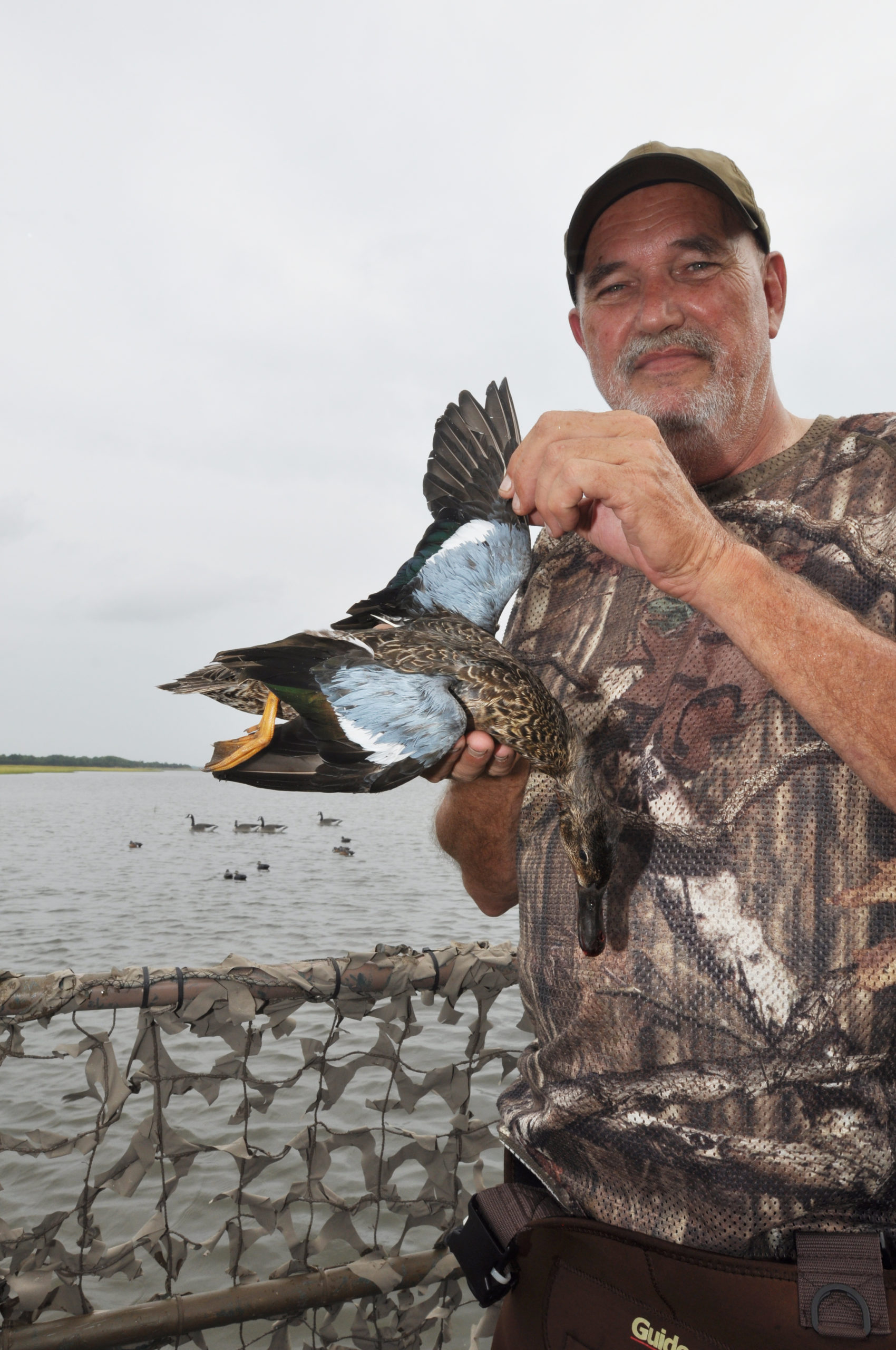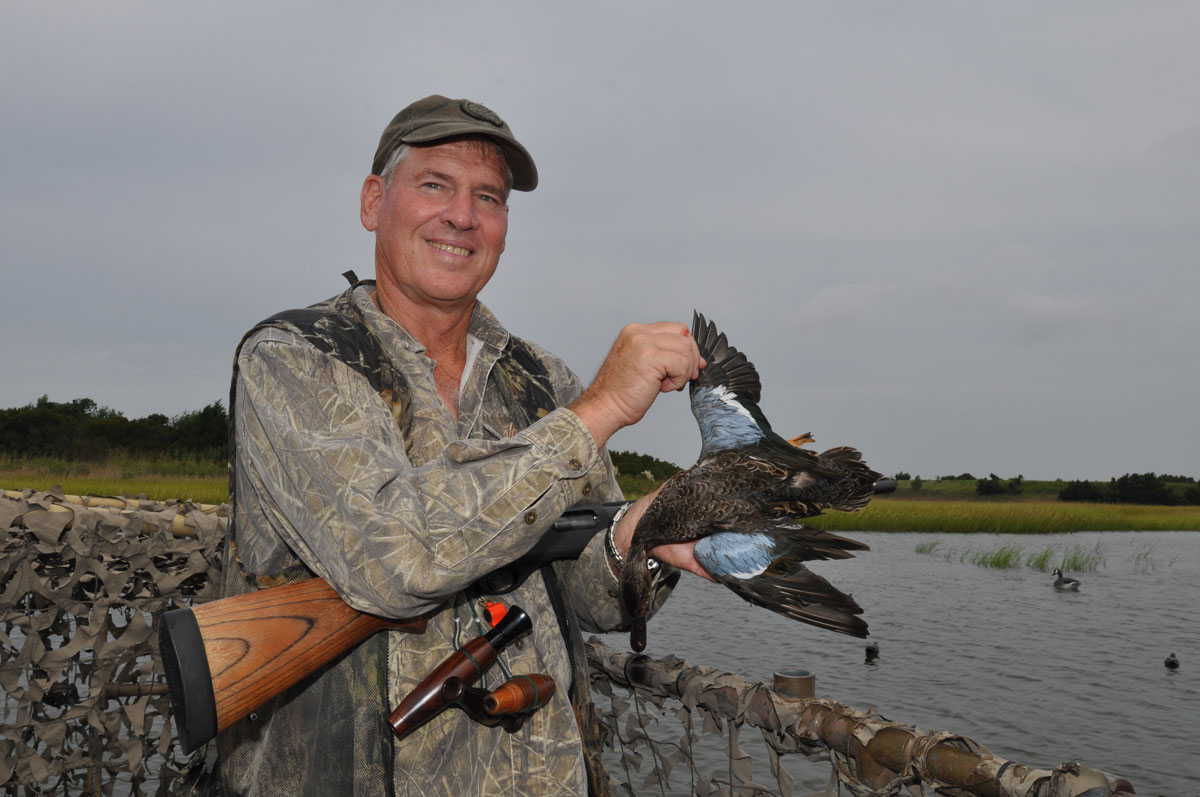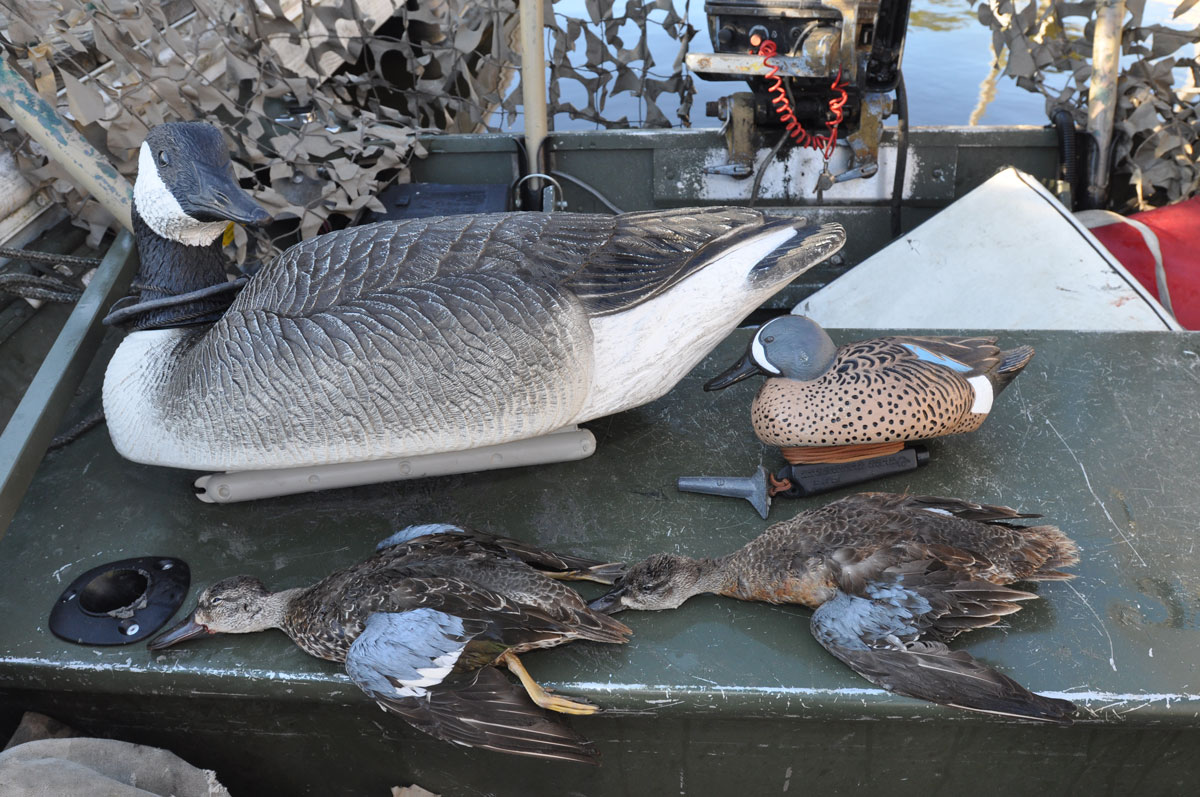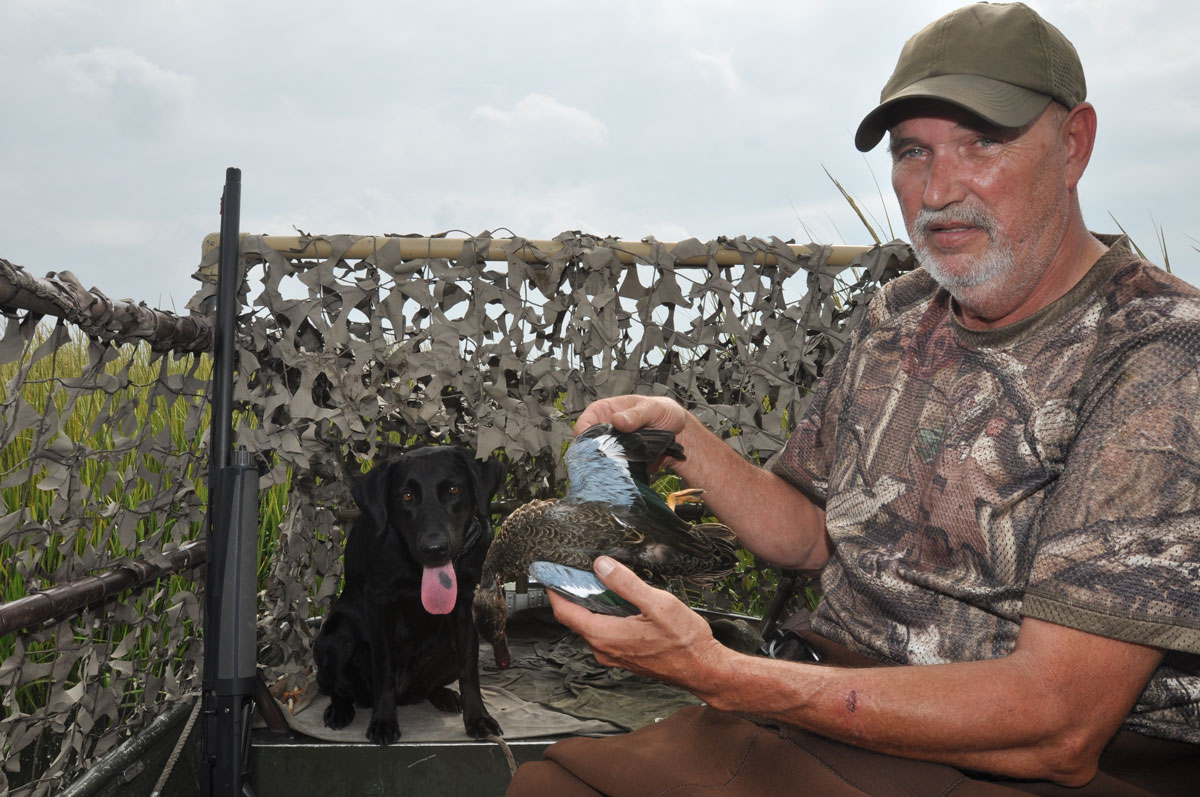
Special early season gives North Carolina waterfowl hunters a jump-start on their time in the blind.
“Feeling the teal” is an expression used by supporters of UNC-Wilmington’s athletic teams. Teal became the school’s official color in 2009 after serving unofficially for many years prior. Greenish blue or bluish green, depending upon your perception, it is an iridescent color present in the speculums of blue-winged and green-winged teal.
These two tiny waterfowl species lure early birds like Paul Sasser of Greensboro, a dedicated hunter, to the marshes north and south of Wilmington in September. He says the four-hour drive is worth the effort.
“I stopped hunting waterfowl for years, but I loved it when I was younger,” said Sasser, 61. “Things in my life changed for the better, so I came back to the sport with a renewed passion.”
Other than participating in dove hunts over Labor Day weekend, Sasser only hunts waterfowl, so he marks his calendar for the Sept. 10-28 teal-only season that the N.C. Wildlife Resources Commission sets annually to give hunters east of US 17.

“I work on my aluminum john boat and the blind I built for it, plus my decoys and other duck hunting gear, all year long,” he said. “I take the blind off the boat to fish for stripers between the duck and goose seasons, but once the teal season arrives in September, the blind stays on the boat until the end of January. I look at the teal season as a way of making sure everything is perfect before the big events — the duck and goose seasons that open in October, November and December.”
Hunting the marshes of the Cape Fear River, New Hanover, Brunswick and Pender counties, Sasser said he usually hears only scattered gunfire.
“There are a few other teal hunters around,” he said. “But there are a lot more fishermen. When anglers see the decoys, they usually keep a respectful distance. Most of the time, I pick up my decoys just after sunrise, which is before most fishermen are on the water.”
Besides fishermen, the September teal season brings hunters some other interesting problems, the first being heat. Nasser said he peels down his waders or takes them off completely to stay cooler. Second is the mosquitos and midges — coastal hunters call them “sand gnats” — Sasser uses a ThermaCELL and DEET repellent.
The biggest factor, however, is where the teal are in their migration.

“I only get to hunt Fridays and Saturdays, but I might extend a weekend if I see that the migration is on,” Sasser said. “That is the thing that most effects my success. Teal are not smart birds, so they decoy well. If you see a flock, there is a good chance they will come in. The problem is the timing of the season, because it is so short. The birds might be here or they might have already flown through. They also move around. You might hunt one day and have a good shoot. You go the next day, and they are gone. You ask yourself, did they fly all the way to South America or did they just move a few miles?”
Sasser’s assertion that teal decoy well may be an understatement. They are suckers for teal decoys but are also attracted to mallard, black duck, gadwall and decoys of other species. Since the resident Canada goose season is also open, hunters may want to add a goose decoy or two to their spread.
Sasser shoots the same shotgun and loads he uses for bigger ducks, rather than buying special teal loads. He prefers tungsten shoot, especially No. 4 Hevi-shot and No. 5 Kent Matrix.
“It may seem expensive, but you don’t want to lose a duck, even if it is a teal,” he said. “I look at tungsten loads as cheap, compared to the cost of making the trip. I also won’t be wasting ammo shooting at crippled ducks. A wounded teal can sure get away from you if it lands in the grass, and looking for it wastes hunting time. The last thing you want when you only have an hour of good hunting is to watch a flock of teal zip through your decoys while you are looking for a crippled duck. Sometimes, I put out Canada goose decoys along with my teal decoys. You never know when a goose might fly by, and you need to have a load that will bring it down, too.”
Joe Fuller, the Commission’s migratory game bird coordinator, said the number of September teal hunters is difficult to pin down.

“In North Carolina, participation is fairly limited,” he said. “The first couple of years it was relatively high, but it has dropped off a little bit and remains low, but stable, at a few thousand. It is mostly our extreme coastal hunters that participate — the guys in Currituck, Pamlico, Hyde and other northeastern coastal counties that have good access to our coastal impoundments and open marshes. They may go out a couple of times during the season.”
Fuller said the Commission does its best to time the season to the flight, but it can be hit or miss. Some hunters tell him it is too early, while others say it is too late — which means it is probably just right.
“Will we hit the teals’ migratory peak?” he asked. “Who knows? I have hunted teal during the September season once or twice, and my impression is that it is mainly a hunt for locals who can keep track of the birds in their hunting areas.”




Be the first to comment